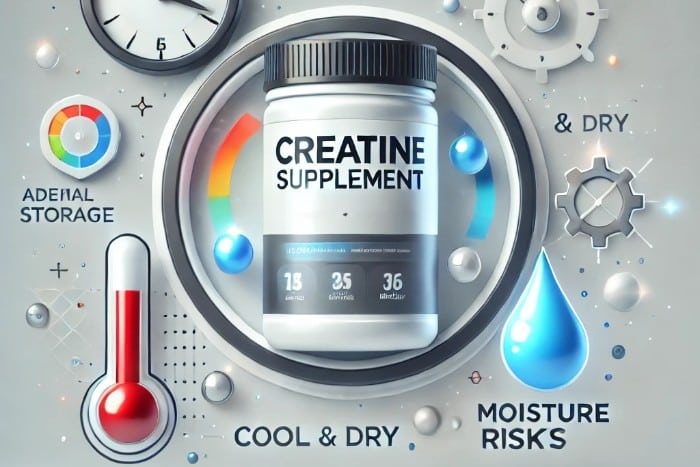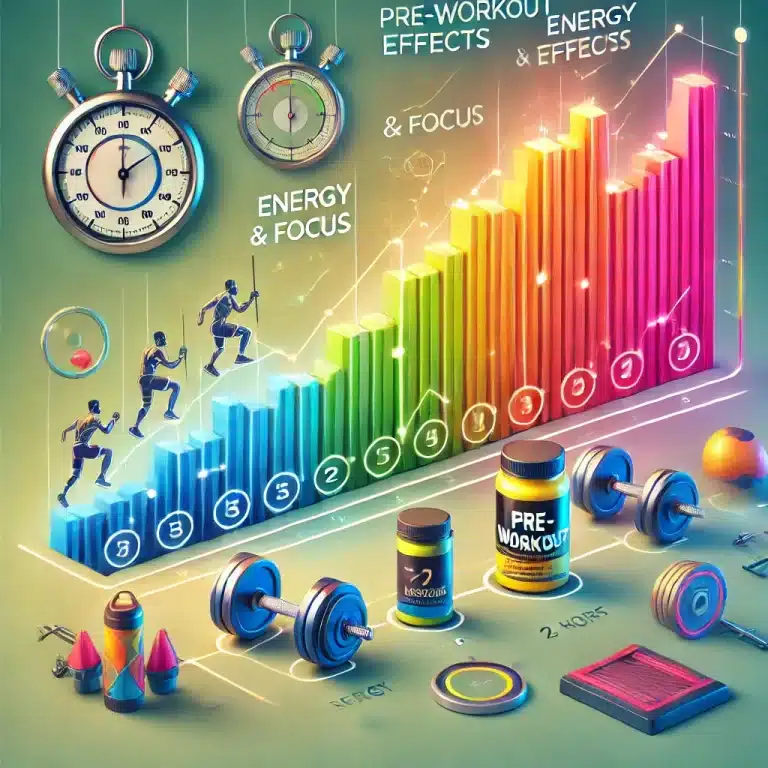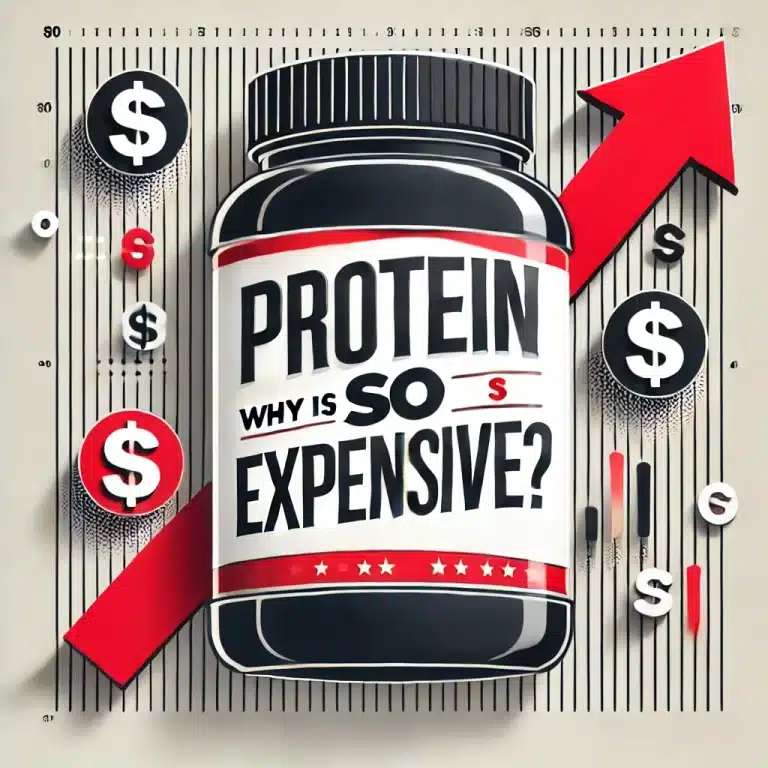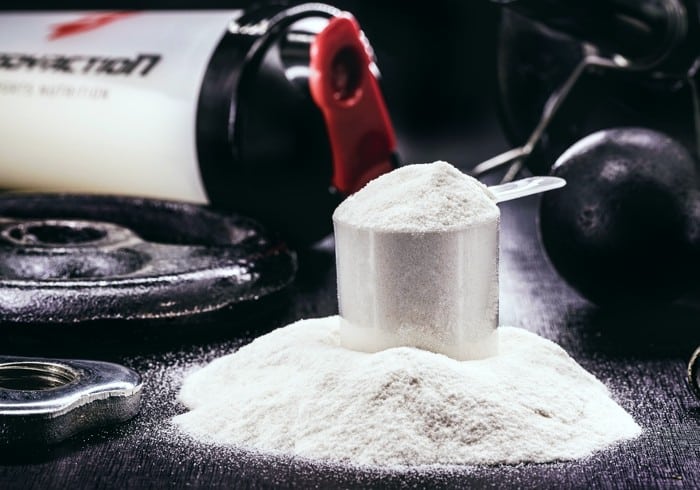What Does Creatine Taste Like? (And How to Make It Better)
So there you are in the kitchen, looking at a scoop of white powder and wondering, “This is meant to help me reach a new personal record… but do I have to drink this?”
Get that.
Creatine is one of the most well-established supplements in the fitness scene. It’s great for building muscle, enhancing strength, and speeding up recovery. It’s budget-friendly. It works!
Honestly, it’s not exactly going to take home any flavor-of-the-year awards. Not really there at all.
When I first started taking creatine, I thought it would taste like those pre-workouts—super sweet, maybe a bit tangy, something bold. Instead, it felt like someone just poured powdered drywall into my water bottle.
But you know, the taste isn’t always terrible—it’s just kind of… odd. It depends on your perspective; you might hardly notice it or dislike it.
In this guide, I’m going to share what creatine actually tastes like, how the different forms stack up against each other, and some handy tips to make it easier to take (so you don’t have to struggle with it every time).
Does Creatine Have a Taste?
Creatine is often described as tasteless, but if you’ve ever taken it on its own, you might have noticed that it does have a mild taste and texture. While it’s not overpowering, some people are more sensitive to its subtle bitterness and chalky mouthfeel.
1. The Taste of Unflavored Creatine
If you’re taking pure, unflavored creatine monohydrate, you’ll likely notice that:
- It has a very mild, slightly bitter taste that some people describe as “earthy” or “chemical-like.”
- It doesn’t have a strong flavor, but it’s not completely tasteless either.
- The main issue isn’t the taste it’s the grainy, gritty texture when mixed with liquid.
Because creatine doesn’t dissolve well in cold water, it tends to stay suspended in the liquid, creating a slightly chalky, powdery mouthfeel when you drink it. This can make it feel like you’re drinking fine sand or flour, which some people find unpleasant.
2. Why Some People Say Creatine Is Tasteless
For many people, creatine’s taste is barely noticeable when mixed into a flavored drink like juice, sports drinks, or smoothies. Since the flavor of these drinks is much stronger, they completely mask any bitterness or chalkiness.
However, if you’re mixing creatine with plain water, you’re more likely to notice its subtle taste and texture. Some people are also naturally more sensitive to bitter flavors, which can make creatine seem stronger in taste than it is.
3. Different Types of Creatine and Their Taste
While creatine monohydrate is the most common form, other types of creatine may taste slightly different:
- Creatine HCL (Hydrochloride): Dissolves more easily in water and has a mild sour or acidic taste, making it slightly different from monohydrate.
- Micronized Creatine: A finer version of creatine monohydrate that dissolves better, making the taste and texture less noticeable.
- Buffered Creatine (Kre-Alkalyn): Designed to be easier on digestion, but still has a mild, mineral-like taste.
- Creatine Nitrate: May dissolve better but can have a slight chemical aftertaste.
Most of these creatine types still have a neutral to slightly bitter taste but monohydrate, micronized and HCL versions tend to mix better, which reduces the grainy mouthfeel.
4. Why the Taste of Creatine Matters
Even though creatine’s taste is not strong, it can still be a dealbreaker for some people, especially if they are taking it with just water. The gritty texture is what most people dislike, which is why many prefer to:
- Mix it with flavored drinks to completely hide any taste.
- Use micronized creatine for better solubility.
- Switch to capsules or gummies to avoid the taste and texture altogether.
Why Does Creatine Taste So Bad?
If you’ve ever taken unflavored creatine powder, you might have noticed that it doesn’t exactly taste great. While some people say it’s tasteless, others describe it as chalky, bitter, or slightly chemical-like. But why does creatine taste so bad for some people?
1. It Doesn’t Dissolve Well in Water
One of the biggest reasons creatine tastes unpleasant is because it doesn’t fully dissolve in water, especially in cold liquids. When you mix it with just water, it tends to:
- Stay gritty and grainy, making it feel like you’re drinking sandy water.
- Sink to the bottom of your glass, so the last sip is the worst.
- Coat your tongue, leaving behind a dry, chalky feeling.
Since creatine monohydrate is not highly water-soluble, it often lingers in liquid rather than fully blending in, which affects both the texture and taste.
2. It Has a Naturally Slightly Bitter or Chemical Aftertaste
Even though creatine doesn’t have a strong flavor, it has a naturally mildly bitter or chemical-like taste, especially when mixed with just water. This comes from its pure, raw form since it’s a lab-synthesized compound designed for muscle energy production, it’s not meant to taste like candy on its own.
Some people are more sensitive to bitter compounds, which is why certain individuals notice the taste more than others. If you’ve ever thought, “Why does my creatine taste awful?” but your gym buddy says it’s tasteless, it’s probably just differences in taste perception.
3. Poor Quality Creatine Can Taste Worse
Not all creatine powders are created equal. Lower-quality creatine might:
- Have impurities that create an unpleasant aftertaste.
- Contain fillers that alter the taste and texture.
- Be less micronized, making it even grittier.
If your creatine tastes especially bad, switching to a high-quality, creatine monohydrate from a reputable brand can make a huge difference.
4. Flavored Drinks Enhance the Bad Taste
If you’ve ever mixed creatine into tea, coffee, or flavored drinks, you might have noticed it sometimes makes the taste worse instead of better. That’s because creatine can slightly alter the pH balance of certain liquids, creating a weird or sour aftertaste when mixed with acidic drinks like orange juice or lemonade.
If you’re experiencing this, try mixing it with a different liquid, like a sports drink, protein shake, or even warm water to help it dissolve better.
How Different Forms of Creatine Taste
Creatine comes in several forms, and each has a slightly different taste and texture.
1. Unflavored Creatine Monohydrate Powder
- Taste: Mild, neutral, or slightly bitter with a chalky texture
- Texture: Gritty if mixed in cold water, dissolves better in warm liquids
- Best way to drink it: Mix with juice, sports drinks, or flavored pre-workout to mask any aftertaste
2. Flavored Creatine Powders
- Taste: Sweet, fruity, or tangy, depending on the brand
- Texture: Generally smoother than unflavored, dissolves better in liquid
- Best way to drink it: Mix it with water or blend it into a smoothie for a more enjoyable experience
Flavored creatine is designed to eliminate any bitterness and can actually taste pretty good, especially if mixed with the right drinks. Some popular flavors include fruit punch, blue raspberry, lemonade, and tropical blends.
3. Micronized Creatine
- Taste: Similar to regular creatine, but slightly less noticeable
- Texture: Finer powder that dissolves more easily, making it smoother
- Best way to drink it: Mix it with water or a protein shake for easier consumption
Micronized creatine is simply creatine monohydrate that has been processed into smaller particles, improving its solubility in liquids. This helps reduce the gritty texture that some people dislike.
4. Creatine Gummies
- Taste: Sweet, candy-like, often fruity
- Texture: Chewy and soft, like a gummy vitamin
- The best way to take it: Just chew and swallow, no need to mix it with water
Creatine gummies taste like a fruity snack, making them a great option if you don’t want to deal with powders or capsules. However, they often contain added sugars and a lower dose per serving, so you may need to take multiple gummies to get an effective amount.
5. Creatine Capsules or Pills
- Taste: None, since you swallow them whole
- Texture: Smooth, sometimes large.
- The best way to take it is with a full glass of water to help absorption
If you hate dealing with taste or texture, capsules are the easiest option. They bypass any flavor issues altogether, making them a convenient choice for people who prefer a tasteless experience.
6. Liquid Creatine
- Taste: Usually sweetened, but can have an artificial or slightly medicinal taste
- Texture: Smooth and easy to swallow
- Best way to take it: Directly from a dropper or mixed into juice
Liquid creatine is less common, and while it’s convenient, some people don’t like the taste, especially if it contains artificial flavors or preservatives. Additionally, research suggests that liquid creatine is less stable than powder, meaning it may not be as effective over time.
How to Make Creatine Taste Better?
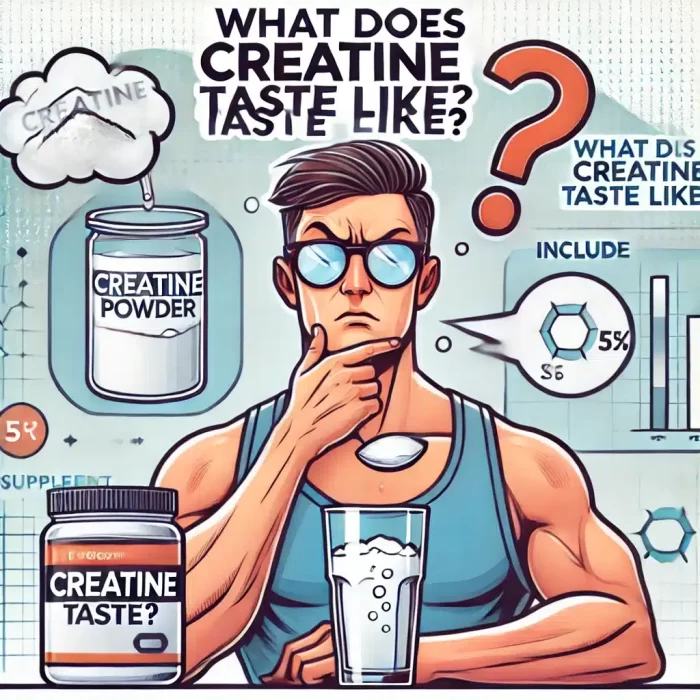
If you find creatine’s chalky texture or mild bitterness unpleasant, you’re not alone. While it’s not the worst-tasting supplement, it’s not the most enjoyable to take on its own. The good news is that there are plenty of ways to make creatine taste better, whether you’re using unflavored powder, flavored versions, or alternative forms like capsules and gummies. Here are some of the best ways to improve your creatine experience.
1. Mix It With a Flavored Drink
One of the easiest ways to mask the taste of creatine is to mix it with a flavored beverage instead of plain water. Creatine itself is nearly tasteless, but its gritty texture can be unpleasant, especially in cold water. Mixing it into a strong-flavored drink helps cover any bitterness or grainy feel.
Some of the best drinks to mix creatine with include:
- Fruit juice (orange, apple, grape, or cranberry) – The natural sugars and acidity help disguise any bitterness.
- Sports drinks (Gatorade, Powerade, or electrolyte-infused water) – These not only improve the taste but also enhance hydration, which is important when taking creatine.
- Iced tea or lemonade – The tartness can help neutralize creatine’s mild aftertaste.
- Protein shakes – If you already drink protein shakes, adding creatine to them makes it completely unnoticeable.
- Flavored BCAAs or pre-workout – If you take branched-chain amino acids or pre-workout supplements, mixing creatine into them can make it a seamless part of your routine.
If you go this route, stir or shake it well to avoid clumps and drink it quickly so the creatine doesn’t settle at the bottom.
2. Use Warm Water for Better Dissolution
One of the biggest complaints about creatine is that it doesn’t dissolve well in cold water, leading to a gritty texture. Warm or hot water helps break down the powder more effectively, making it easier to drink.
- Try mixing it with lukewarm or slightly warm water, then add ice if you prefer a cold drink.
- Stir for at least 30 seconds or shake it in a bottle to improve solubility.
- Micronized creatine dissolves better, so switching to a micronized version can help.
This simple trick helps eliminate the grainy feel that many people dislike.
3. Blend It Into a Smoothie
If you make protein smoothies or meal replacement shakes, adding creatine is a great way to completely hide any taste or texture. The thickness of a smoothie prevents any grittiness, and the flavors of fruits, yogurt, and protein powder mask any bitterness.
Some great smoothie combinations for creatine include:
- Banana, almond milk, peanut butter, and chocolate protein powder
- Strawberries, Greek yogurt, honey, and vanilla protein powder
- Mango, coconut water, and a scoop of whey protein
- Spinach, blueberries, and almond milk for a nutrient boost
This is one of the best ways to take creatine if you want to eliminate any unpleasant taste or texture.
4. Try Micronized Creatine
Micronized creatine is processed into smaller particles, which makes it dissolve much better in liquids compared to regular creatine monohydrate. If you’re struggling with the grainy texture, switching to micronized creatine can make a huge difference.
- It mixes more smoothly, especially in water, juice, or sports drinks.
- It reduces clumping and settling at the bottom of your cup.
- It minimizes the chalky mouthfeel that some people dislike.
Most high-quality creatine brands offer micronized versions, and they’re not much more expensive than standard creatine.
5. Take It With a Meal
If you don’t like drinking creatine on its own, another option is to take it with food. While creatine doesn’t break down in heat, mixing it into hot foods can slightly affect its texture. Instead of dissolving it, you can:
- Mix it into yogurt or oatmeal: This helps hide both the texture and taste.
- Stir it into applesauce or pudding: The smooth consistency makes it easy to take.
- Blend it into nut butter: Spread it on toast for an easy way to incorporate creatine into your diet.
Taking creatine with food also helps with absorption, especially when paired with carbohydrates.
6. Switch to Flavored Creatine Powders
If you find unflavored creatine unpleasant, flavored versions can make a big difference. Many brands offer fruit punch, lemonade, blue raspberry, and tropical flavors, which make taking creatine feel more like drinking a refreshing sports drink rather than a supplement.
Flavored creatine powders:
- Eliminate the bitterness of unflavored creatine.
- Dissolve better, especially if they contain added electrolytes.
- Taste more enjoyable, making it easier to take daily.
If you already drink flavored pre-workout or BCAAs, buying a creatine powder in the same flavor can make it easy to combine the two.
7. Try Creatine Capsules or Gummies
If you really can’t stand the taste or texture of creatine powder, switching to capsules or gummies is an easy fix.
- Creatine capsules: These are completely tasteless and can be taken with water, just like a vitamin.
- Creatine gummies: These are chewable and flavored, making them taste like a sweet treat.
The only downside is that capsules and gummies often contain lower doses per serving, meaning you may need to take multiple servings per day to hit the recommended three to five grams of creatine.
8. Drink It Fast and Chase It With Something Else
If none of these options work for you and you just want to get it over with, you can:
- Mix creatine with a small amount of water, about two to four ounces, and drink it quickly.
- Immediately chase it with juice, tea, or a protein shake to wash away any taste.
- Use the “dry scoop” method, putting a scoop of creatine directly in your mouth and chasing it with water. (Not recommended for everyone, as it can be unpleasant and make you cough.)
While this method isn’t the most enjoyable, it gets the job done in seconds, so you don’t have to deal with lingering taste or texture.
Final Verdict: What Does Creatine Taste Like?
Creatine itself has a very mild, slightly chalky taste, but it’s not overpowering or unpleasant. If you’re taking unflavored creatine powder, you might notice a slight bitterness and gritty texture, especially if mixed with just water.
Flavored creatine powders, gummies, and capsules make it much easier to take without any noticeable taste issues. If you prefer zero taste, capsules are the best option. But if you don’t mind mixing it, adding creatine to juice, smoothies, or sports drinks makes it virtually unnoticeable.
At the end of the day, creatine’s taste is not a dealbreaker, and there are plenty of ways to make it more enjoyable. Whether you take it plain, flavored, in a drink, or as a gummy, what matters most is taking it consistently to get the full benefits for strength, performance, and muscle growth.


